Coonoor
Coonoor is the second most popular hill station in the Nilgiris. The hill station stands at a height of 1839 meters and is known for its great picnic spots and picturesque surroundings. Coonoor is also famous for tea gardens and tea factories. Coonoor provides the traveler with the panoramic view of the lush green Nilgiri hills, with its ravines, valleys, and waterfalls.
Bird watching is a popular pastime in Coonoor, as the area boasts of a large variety of species like cormorants, pipits, thrushes, parakeets, skylarks, Nilgiri verditer, etc. Travelers can take a walk through the tea gardens. There are number of trekking and hiking trails around Coonoor. Travellers can enjoy the exhilarating and unique ride on the toy train that connects Coonoor with Mettupalayam (which Indian Rail spells Metupalaiyam) and Ooty.
The trip provides some breathtaking views of the Nilgiri hills in all its natural glory.

Get There
Route from Bangalore: SH17 to Mysore, NH 212 to Gundlupet; state highway to Coonoor via Bandipur, Gudalur, Ooty, Aravankadu, and Wellington. There are many signboards along the way from Mysore directing you towards Ooty. Once in Ooty drive through the city, there are boards along the way showing you the way. Roads are very bad after Mysore uptil Bandipur.

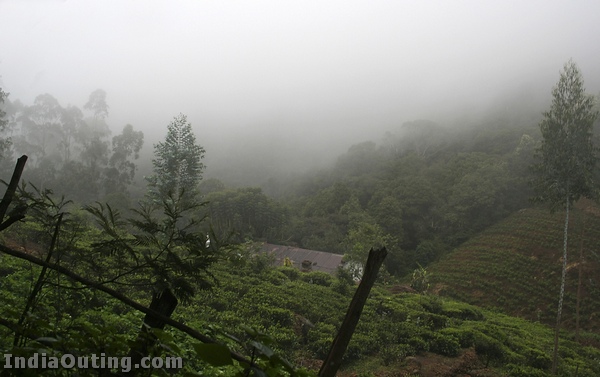
Get around
The town has a number of autorickshaws or three-wheelers that you can hire to get around. Your hotel can also help you locate taxis that you can hire. The climate is so pleasant, however, that walking around may be the best option. Lower Coonoor tends to be very crowded but Upper Coonoor is blessed with less traffic and fairly good roads. You are in a hilly region – so expect to walk up slopes!
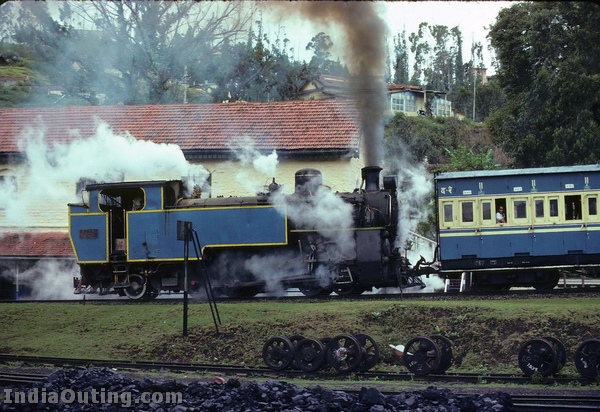
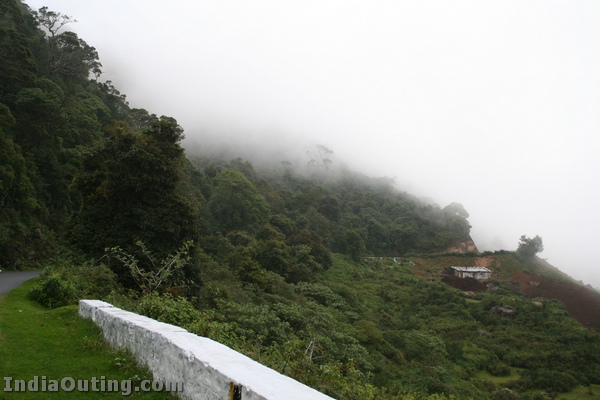
See
- Sim’s Park The park is situated in a deep ravine on the Northern side of Coonoor Railway Station at an elevation of 1768 to 1798 m. The park can be divided into eight major sections. The natural shola with winding footpaths all over the higher slopes of the park is the most distinctive and picturesque feature of this park.
- Lamb’s Rock It is 8 km from Coonoor on the way to Dolphin’s Nose.
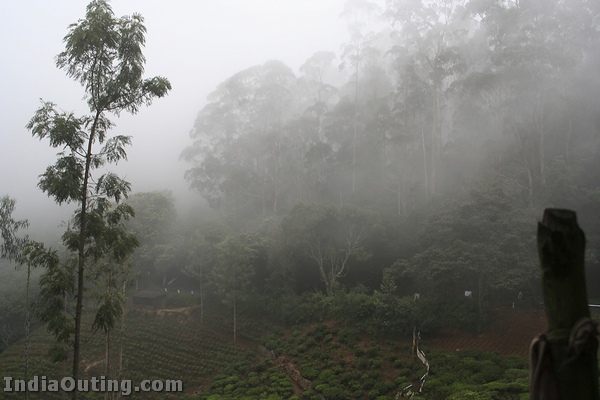
- Laws Falls The Place is a beautiful picnic spot, situated at Coonoor-Mettupalayam Road at the distance of 7 km from Coonoor. The height of the falls is about 180 feet.
- The Dolphin’s Nose Viewpoint Which is 10 km from Coonoor, is an important place to visit. It not only provides a panoramic view of the vast expanse of the Nilgiri hills but also of the famous Catherine Falls.
- Lady Canning’s seat is another notable viewpoint on the way.
Take long walks to any of the villages situated around Coonoor. A walk by the tea gardens would be a memorable one. You can also take a walk to the Golf Links owned by Wellington Defence College.
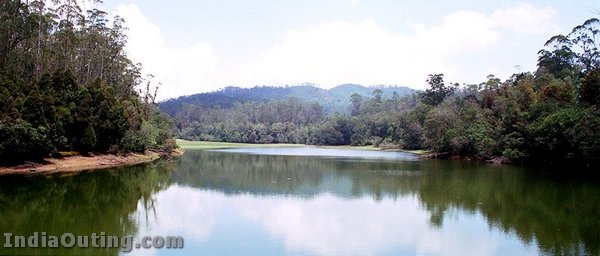
Buy
At Bedford, a few meters ahead of Taj Garden Retreat, on the Kotagiri Road, there is a quaint little furniture shop called Vriksh. This little store can be easily missed if you are driving past a little too fast. Tucked away into a little lane, at the bottom of a flight of stairs you will find intricately carved teak trunks, elegant side tables and ceramic work.
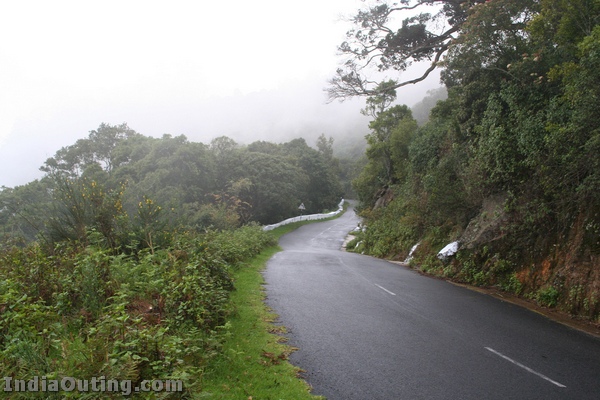
They have tea sets and vases that remind you that the British were once here. According to the lady at the shop, all the furniture is locally made. They are fairly expensive, but is unique and worth it. However, before you buy one of their beautiful mirrors or desks you might want to know that they do not arrange for delivery… so how do you plan to take it back home with you?
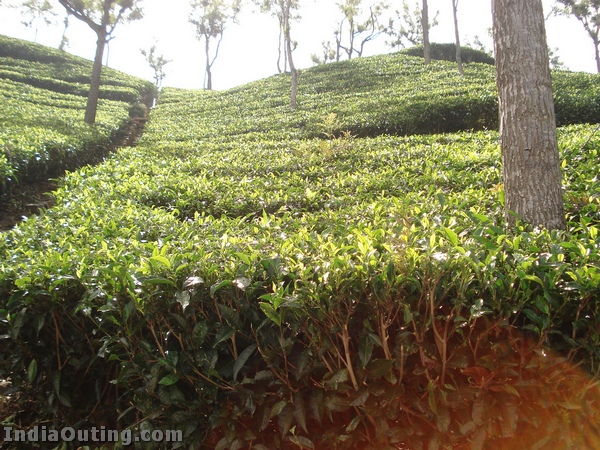
There are also other little shops, selling local produce like tea, honey, jams and preserves and some that sell beautiful embroidered linen. Ask at your hotel and they should be able to recommend the nearest stores or the ones they best recommend. For embroidered linen, my hotel recommended a place called “Needlecraft” in Singara Tea Estate. You can find exquisitely hand-embroidered pillowcases, cushion covers, bedspreads, bedsheets and handkerchiefs at Needlecraft, though they are steeply priced.
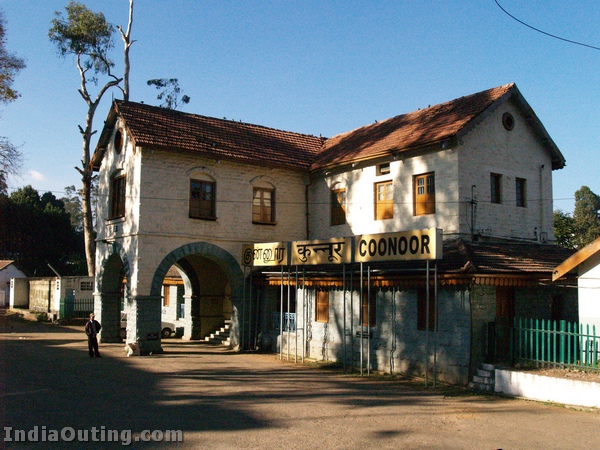
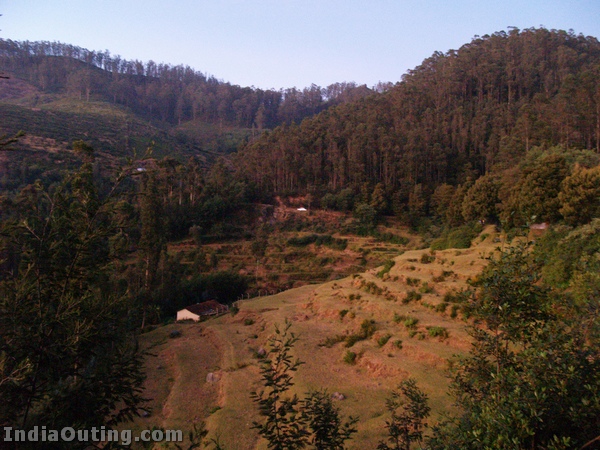
Kanyakumari – Tip of India
Kanyakumari (Tamil: கன்னியாகுமரி) is a town in Kanyakumari district in Tamil Nadu state, India. Located at the southernmost tip of the Indian Peninsula, it is also know by its former name Cape Comorin. The closest major cities are Nagercoil, the administrative headquarters of Kanyakumari district, (22 km) and Thiruvananthapuram, the capital of Kerala (85 km).A popular tourist place in India, the town and the district, Kanyakumari District, in which it is located, is a place of great natural beauty – from the blue seas of Kanyakumari town to the blue hills of the Western Ghats in the interior.
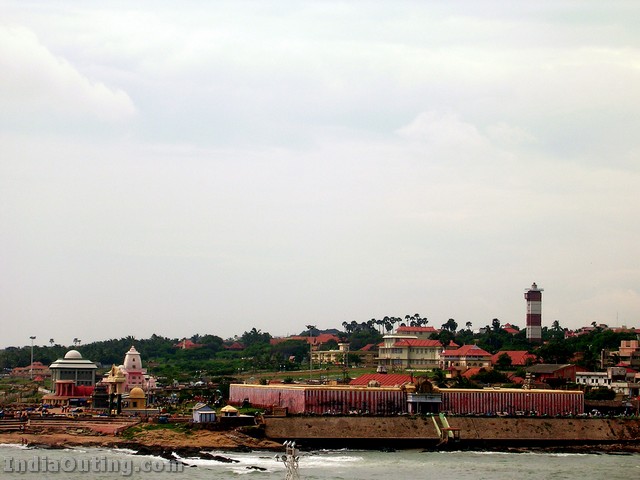
History
Kanyakumari takes its name from the Kumari Amman or Kanyakumari Temple, situated in the town, on the sea-shore, the very confluence of the three water-bodies – Bay of Bengal, Indian Ocean and the Arabian Sea. In his work on ancient India, Ptolemy had identified Kanyakumari (Cape Comorin) along with the Gulf of Mannar as a centre for pearl fishery. He also identifies Korkai, a place to the east of Kanyakumari as an emporium of pearl trade.
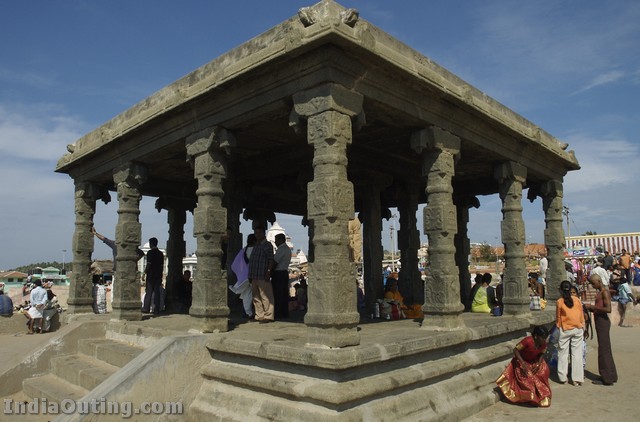

Get in
By air
- Thiruvananthapuram (Trivandrum) of neighbouring state Kerala, is the nearest international airport, with direct flights from the Middle East, Singapore, Maldives and Sri Lanka. And is served by Air-India, among others. From there it takes about two hours by train or bus or taxi. The taxi charges are pretty cheap, about Rs 9-10 per km, and should be around Rs 1000 (US$22 Approx), for a trip to Kanyakumari from the Thiruvananthapuram International Airport.
- Alternatively, if you cannot reach Thiruvananthapuram directly from your place, you can reach Chennai (Madras) the state capital and then take either train or bus to reach Kanyakumari. Note that travelling to Kanyakumari is a bit tiresome via road, especially for Westerners, as the travel time is about 14-15 hours and the climate is pretty hot (30-35 degrees during summer and 25-30 degrees during winter) through out the year. Insist on a II tier air-conditioned coach as this is pretty cheap, about Rs 1200 (US$27). A local flight travel to Thiruvananthapuram is also a viable option, but the ticket prices are slightly higher, ranging from Rs. 1500 and can go up to anywhere around Rs. 5000. In India, the faster you book/plan your travel, the more you save on tickets.
- Alternatively reach Kochi, Kozhikode (Calicut), Bangalore, Bombay, New Delhi, Kolkata and then by train.
By train
Very well connected and serviced by rail to all major cities in India like Chennai, Trivandrum , Kochi, Bangalore, Bombay, New Delhi, Kolkata, Coimbatore etc. And from here starts second longest train route in the world, Kanyakumari to Jammu.
By busBuses are frequently available from Thiruvananthapuram,the closest major transport hub. Long distance buses are available from Chennai (Madras), Coimbatore, Madurai etc.
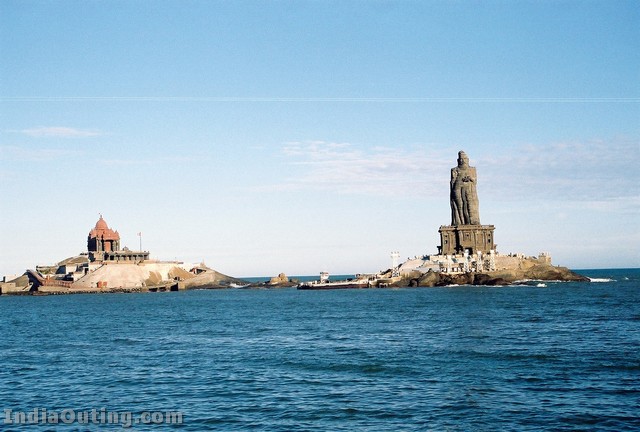
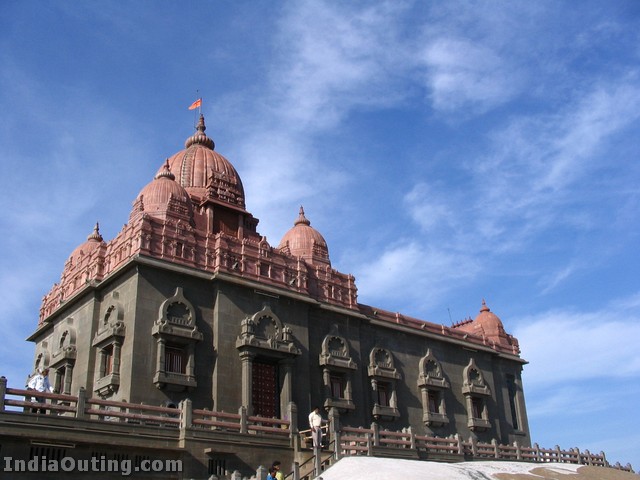
Get around
Most people travel around Kanniyakumari using a hired vehicle. Auto-rickshaws (tuk tuks) are available, along with busses.
See
As such there is nothing much to see. Its very congested and crowded, hot & humid, filled with various people and shops who sell all types of fake elctronic goods, poor quality toys, cheap trinkets and other knick knacks. Never buy any electronic items or cheap googles from here. The beaches are dirty. Various structures have been built by tourism department with aim of improving tourism here. There is something called sunset point, some kind of garden and other crudely made structures. Nothing is worth wasting your precious time. If you can escape from these crowd you can visit Vivekanandapuram (only peaceful area in Kanyakumari) maintained by Ramakrishna Mission. It has got its own lodging and boarding arrangements.If you like to see sunset or sunrise it is recommended to observe it from the beach at Vivekanandapuram. The another popular place are the Kanyakumari Devi temple, Vivekananda rock and the Thiruvalluvar Statue. It is not recomended to visit Kanyakumari in December-January, the crowds are at its peak during these months.
The temple of Goddess Kumari is rather small by South Indian standards, but comes with the usual ingredients of Pujaris (Hindu Priests), Poojas, Kumkums, and Prasads (sweet offerings made to Gods). All men are supposed to enter the temple with bare torsos as it deemed to be a mark of respect to the Devi. You should be careful about the touts in the temple.
- Vivekananda Rock is about a hundred meters from the shore and a regular ferry service exists between the mainland jetty and the rock. The tickets is 20/- for a ride. The Rock has two Mandaps (halls); one belonging to Swami Vivekananda and the other belonging to a Holy Foot. The Holy Foot is a foot shaped carving found on the rock and is believed to be a foot print of Goddess Kumari who stood on this rock on one leg and performed the Tapasya (penance). The Rock memorial has a tall statue of Swami Vivekananda whose photographs are not allowed to be taken from inside the hall. Below the statue was mentioned the year of death of Swamiji and the “probable” dates when Swamiji attained Samadhi on the rock. Here you can see both sunrise and sunset and is one of the main tourist attraction here. Golden Hues of the Horizon are very impressive with the Rock Memorial silhouetted.
- Vivekanandapuram is the headquarters of the Vivekananda Kendra and the centre spreads over an area of 100 acres. There is a well stocked library within the premises of Vivekanandapuram. It is well connected. Buses are also regularly available from Vivekanandapuram to Kanyakumari. One can enjoy absolutely breathtaking views of sunrise from the beaches of Vivekanandapuram. It has got its own boarding & lodging facilities, a post office & a bank in its own premises.
- Thiruvalluvar Statue is dedicated to arguably the greatest Tamil poet, philosopher and saint – Thiruvalluvar. The rock supports a huge statue of the saint carved out of many rocks that were then joined together. It was inaugurated fairly recently. The statue is about 133 feet long which corresponds to 133 chapters in the greatest epic written by the saint – Thirukkural. Tourists can climb up to the feet of the statue. The view from this point is quite breathtaking! It is a very entertaining and enlightening piece of work and inspires one to lead a very principled and moral life. It is a must read for anyone who visits this place and it is advisable to spend at least half an hour specially dedicated for this exercise. Such is the beauty of Kanyakumari that lot of people find themselves attracted to it. Mahatma Gandhi too could not resist its charm and there is a place here dedicated to him called Gandhi Mandapam. This is the place, as told by locals, where one could witness the ‘Sangam’ (confluence) of the three oceans! Gandhiji arrived here and succumbed to the beauty of the place as described in his beautiful words inscribed below his portrait in the Mandapam. After he died, his ashes were brought to this place and kept before they were discharged into the sea. The Gandhi Mantapa is engineered in such a way that, at the place where the ashes were kept, stands a small stone which is said to receive the Sun’s rays only on the 2nd of October, Gandhiji’s birthdate, every year through a small hole on the roof.
- Our Lady of Ransom Church – Located on the shoreline of Bay of Bengal the 100 year old Church of Our Lady of Ransom is dedicated to Mother Mary. The Church that is one of the most beautiful church of India, looks beautiful against the backdrop of the beautiful blue sky.
The Church of Our Lady of Ransom is built in the Gothic style of architecture with a strong Portuguese influence. The Church slightly off white in appearance has three massive towering spires and stained glass windowpanes contributing to the overall grandeur. Another attraction of the Church is the Central Tower. It is 153 feet high and is crowned with a Cross of pure gold.(Intersting to note that the dimesnsions of the Church structures are based on the count of beads in the rosary! There are few things about the Church that makes the visitors gasp with awe as they enter inside. The Church boasts of a beautiful statue of Mother Mary clad in a Saree. Surprisingly, as compared to the grand and ornate exteriors, the visitors are quite taken aback by the simplicity of its interiors. There is just a tiny Cross that adorns the Altar. There are no church benches and the masses are held inside the church in normal days and outside on the clean sands during carnivals and occassions. The prayers are held in Tamil considering the parish here mainly comprises the local fishing folks. However the English masses are conducted of late. Watch out for the 10 days carnival festival during the second week of December every year. It is vibrant and colurful with the fishing hamlets of other nearby places and other religion people celebrate together.
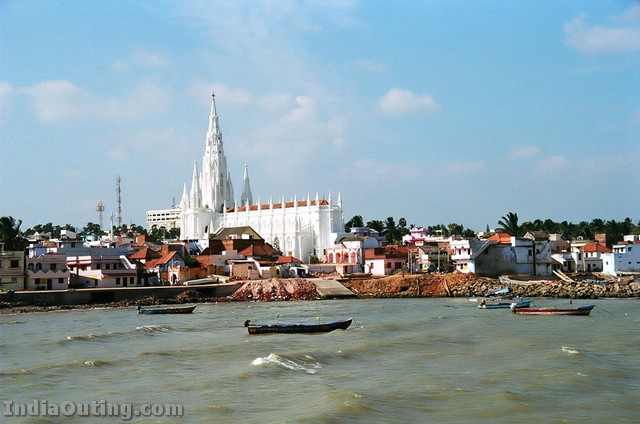
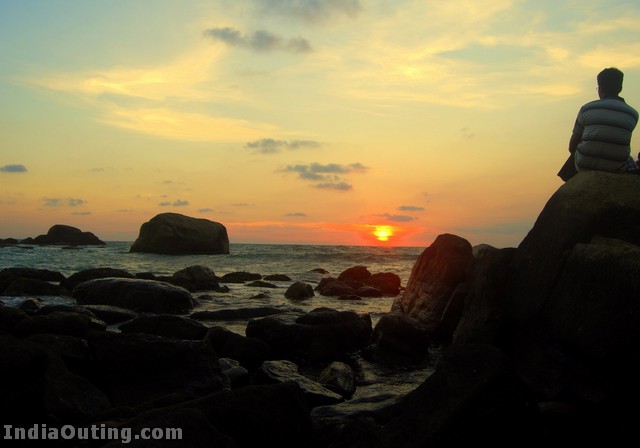
- Padmanabhapuram Palace erstwhile palatial residence of the rulers of Travancore. Made entirely of wood. It lies an hours drive away from Kanyakumari city on the border between Tamil Nadu and Kerala state. It is actually maintained by the Kerala government.
- Kamarajar Mani Mantapa Monument was raised and dedicated to a freedom fighter and Former Chief minister of Tamil Nadu, President of Indian National Congress, Mr Kamarajar. He’s also popularly known as Black Gandhi among the masses. Like the Gandhi Mantapa, this place is where Kamarajar’s ashes were kept here for public to pay homage before immersion into the sea.
- Baywatch is a water theme amusement park at the sunset point, and home to India’s first wax museum.
- Tsunami Monument A momument recognizing the tragic events of the 2004 tsunami which claimed the lives of many Kanyakumari denizens exists near the south shore. The monument is made of uniquely colored items such as a wave, a flame, and human hands, together.
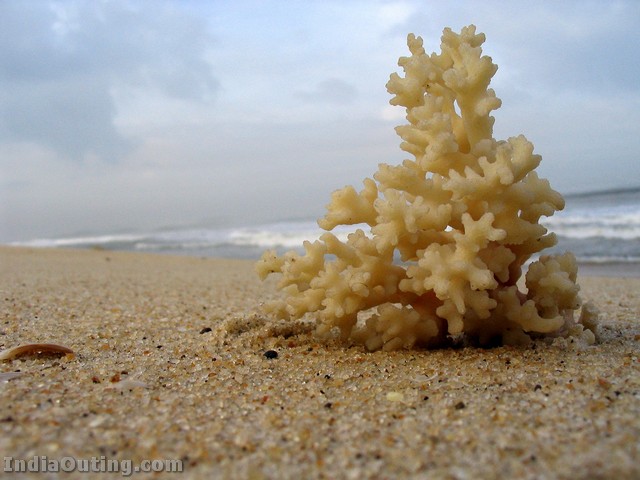
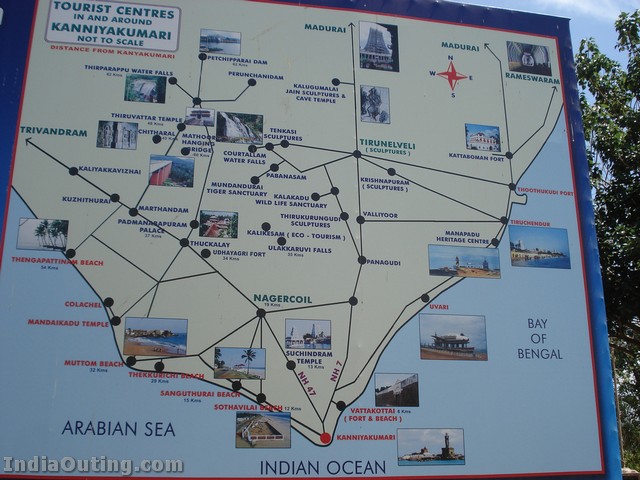
Do
Vivekananda Rock memorial has a special meditation room which is absolutely quiet. One could meditate there. People also wet their feet on the shores of the ocean before entering the temple as the waters considered sacred. Bathing is banned in many part of the beach(though you may find some people bathing) due to a number of tourists dying each year due to the powerful ocean waves. For bathing in the sea, consider Vattakotta (Meaning: Round fort) beach, situated about 6 km from Kanyakumari. Naked bathing or bathing with bikinis are a taboo not only in Kanyakumari but also in nearly all beaches in India. Beaches in Goa and Pondicherry, are a bit different, as a majority of people visiting there are foreigners.
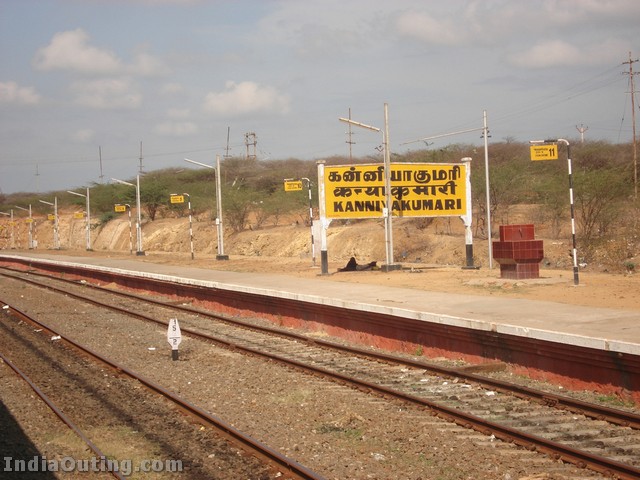
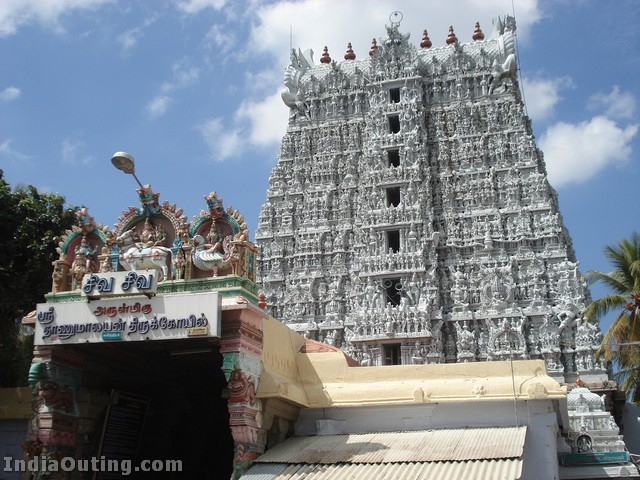
Buy
Tourists can buy a lot of interesting items ranging from, straw hats, conches, sea shells, cheap electronics etc., There are some small shops where one can get a customized conch with name or quotes inscribed. These items can serve as a memorable item of your trip. Electronics available at Kanyakumari are dead cheap but, since all of them are imported from china, the quality of them are always sub-par. It’s always good to avoid the electronics shops and the associated hagglers. Hair bands and clips made of coconut shells are worth the money and you may have to ask one for to the shop keeper if one is not available at the display. Star fish shells (for decorating your indoors), sea shells of various sizes, kaleidoscopes, colourful sand packets(not artificially colored), collected from different parts of the beach, used specially for decorating your indoor showcases, are also available. The cost of majority of these commodities range from Rs 20 (0.5 US$) to Rs 50 (1.1 US$), and never cross a 100.
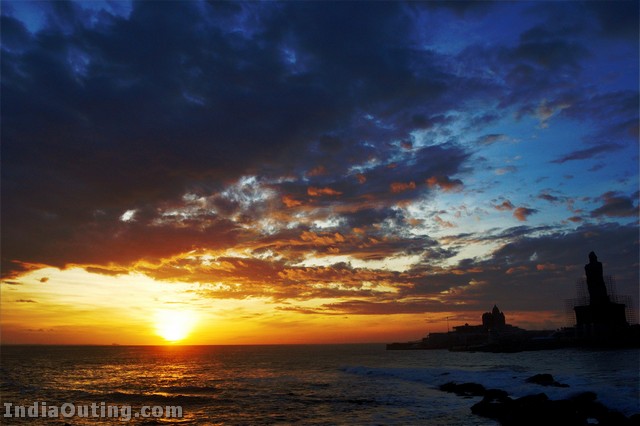
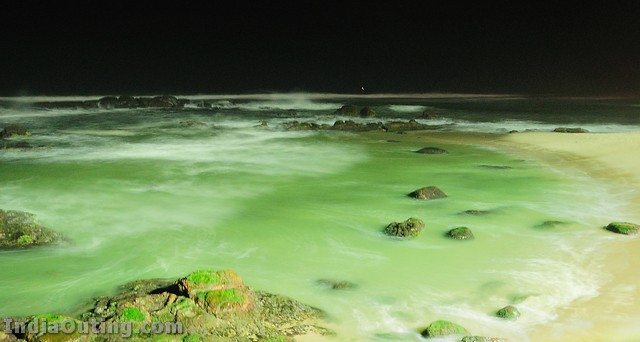
Kodaikanal (Tamil: கோடைக்கானல்) is a city in the hills of the taluk division of the Dindigul district in the state of Tamil Nadu, India. Kodaikanal is referred to as the “Princess of Hill stations” and has a long history as a retreat and popular tourist destination. It’s a lot cooler in temperature than lower elevation cities such as Chennai. Kodaikanal was established in 1845 as a refuge from the high temperatures and tropical diseases of the plains. Much of the local economy is based on the hospitality industry serving tourism. The Kurinji Flower is in full bloom around December once in 12 years, and it bathes the valley in a beautiful sea of blue. Its because of this the hills are known as Nilgiris (Nil means Blue and Giri means Hill). It was last in full bloom in 2006; its next bloom is expected in 2018. Kodaikanal is also sometimes referred to as “Princess of Hill stations.”
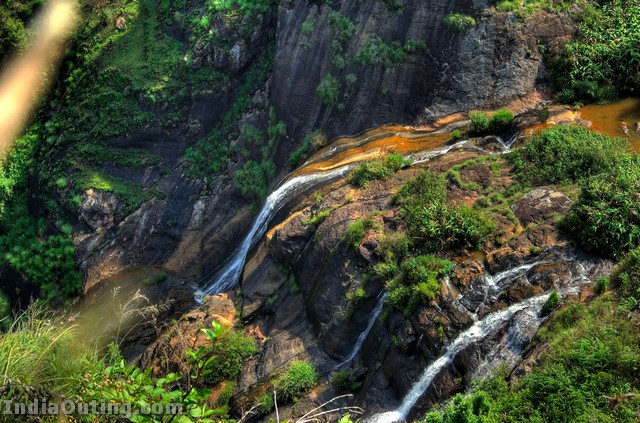

Get in
By plane The closest airports to Kodaikanal are Madurai 120 km and Coimbatore 175 km.By train Nearest railhead is Kodaikanal road. Kodairoad Station is nearly 80 km.
By car Reach Kodai Road80kms Rs.1000/- aprrox,Dindigul or Madurai and then take a cab to Kodaikanal. Ask the resort to arrange for the pick-up. The drive from Kodai road takes approximately 2 hrs while the drive from Madurai takes approximately 3 1/2 hours and from Dindigul it takes about 2 hrs.
From Cochin/Kochi(kerala) it is 295 kms via the hill station of Munnar(kerala).The route to be taken is Kochi-Muvattupuzha-Kothamangalam-Adimali-Munnar-Devikulam-Poopara-Bodi-Theni-Kodaikanal which is the NH49 Kochi-Madurai.
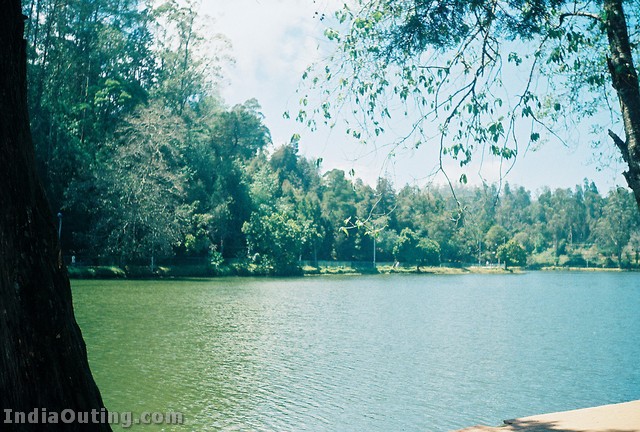
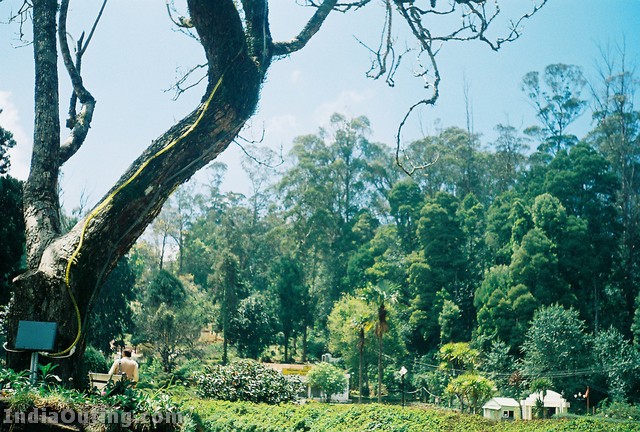
See
- Berijam Lake – perhaps the most pristine of the three lakes in Kodai
- Coakers Walk- If you wish to catch the scenic valleys, the best time to visit the place would be before 2PM. But if you want to watch snow-like clouds (only in winter) beneath you form an ocean, reach the place between 3PM and 6PM. Try and catch the sunrise here or in the nearby Greenlands Hostel. A marvel. Also try out the telescope near the main gate.
- Bryant park – A must see. Its main entrance is on the road surrounding the lake and is a 10 minute walk from the entrance to the boat club.
- Kodai Lake- If you are going in Winter, do the boating in the evening, as its an amazing experience to boat through fogs settling on the lake.
- Kurinjiandavar Temple – about 4 km from the lake is a temple whose presiding God is Lord Muruga. The flowers inside the temple bloom once in 12 years. One can get a view of the Palani Hills and the Kodaikanal Town from this temple. During the winter, the view of Kodai city and Palani from the two ends of the temple is blocked. However, in summer, the visibility is good and hence the experience too.
- Green Valley View/Suicide Point- has a more than 5000 ft steep drop from this point. The monkeys are a good attraction at this point. Renamed Green Valley View, apparently to prevent people from being lured to commit suicides.
- Pillar Rocks – huge steep cliffs which look like “Pillayar” (Lord Ganesh in local language Tamil). Watch out for the cross at the top of the mountain hoisted by an English adventure enthusiast.
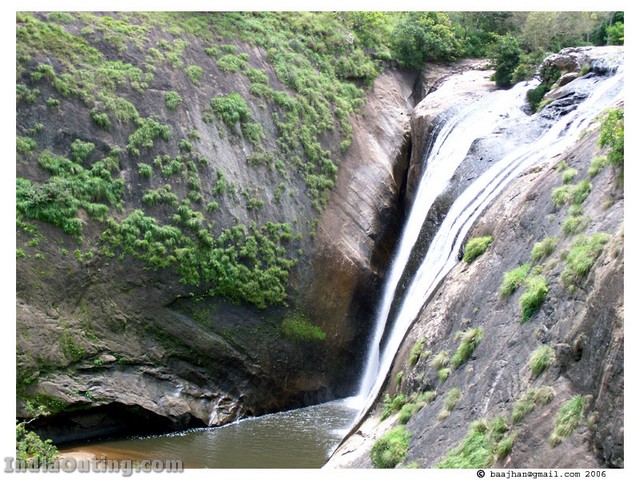
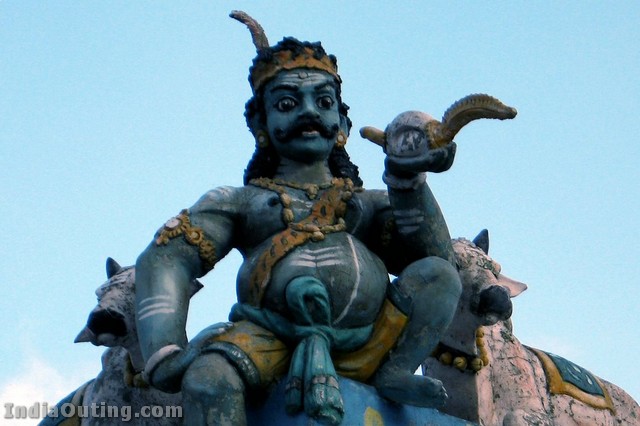
- Silent Valley View
- Devil’s Kitchen – a cave known more to the locals, in between “Green Valley View” and “Pillar Rocks”. Watch out for the deep hidden ravines. What would appear like mere dark gutters are actually a deep fall. Many unsuspecting people have fallen prey to the “devil’s trap”. So,watch your step!
- Guna Caves – a cave which became very famous after the movie GUNA. Very steep and risky to get in. Think public are not allowed to enter this cave nowadays. A very good place to take pics..
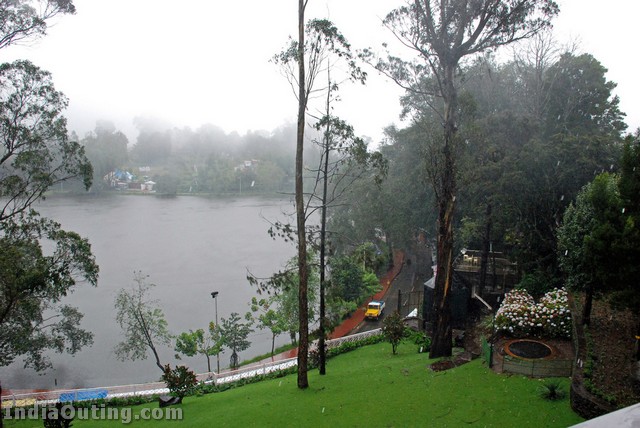
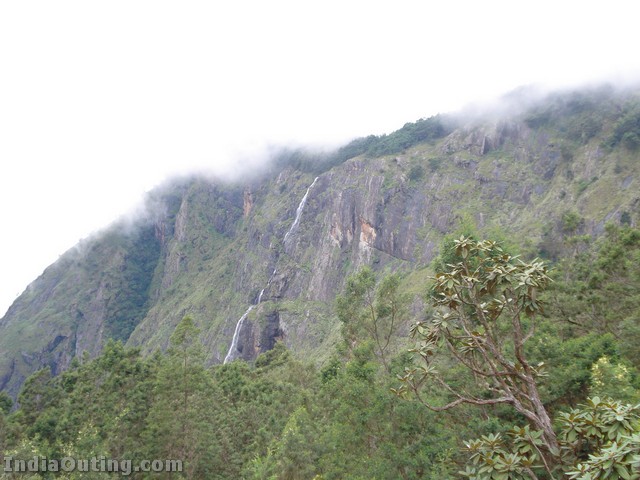
Do
- Cycle around the lake – and watch the clouds while they slowly descend onto the water; cycles are available for hire at the lake on an hourly basis. It is possible to cycle to other places although cycling one way will be difficult due to the hilly terrain. Do check the cycles before setting out.
- Boating at the Kodai lake – paddle and row boats are available at the lake. Entrance is via the Kodaikanal Boat Club.
- Trekking – Kodai offers several scenic trekking spots, including one which is to walk along the stream which goes to dolphin nose. Kodai tourist office has a trekking guide which is available for free there, which lists all the possible trekking routes and difficulty levels. The tourist office advises people to take guides and offers to provide them, although this is not necessary. An easy trek is the Perumalmalai trek which is the tallest mountain that area.
- Wander About – Kodai has numerous waterfalls and beautiful views not mentioned in the tourist guides, so wandering about can bring you to some spectacular place.
- Horse Riding – Right near the front of the entrance to the boat club, you can rent a horse (with the trainer) to take you around the lake.
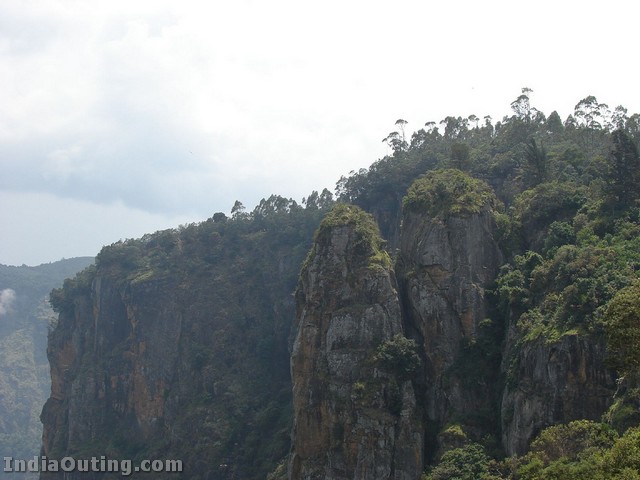
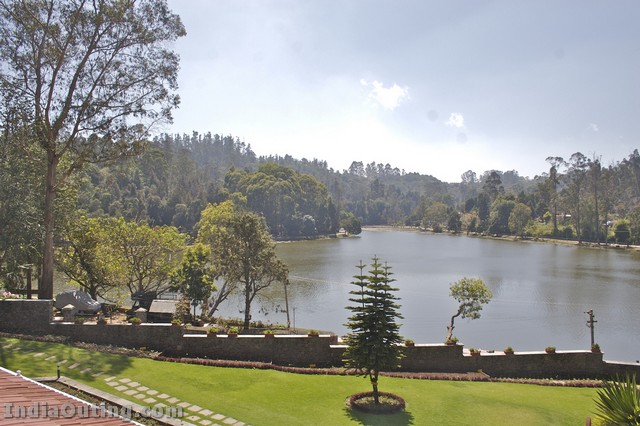
Buy
- Cheese Factory – Various Cheeses.
- Home made Chocolates – Kodai’s shops are stocked with home made chocolates. These are a lot cheaper compared to the major brands.
- Eucalyptus Oil and herbal oils- A Variety of oils that claim to relieve joint pains and other aches are also available at every shop.
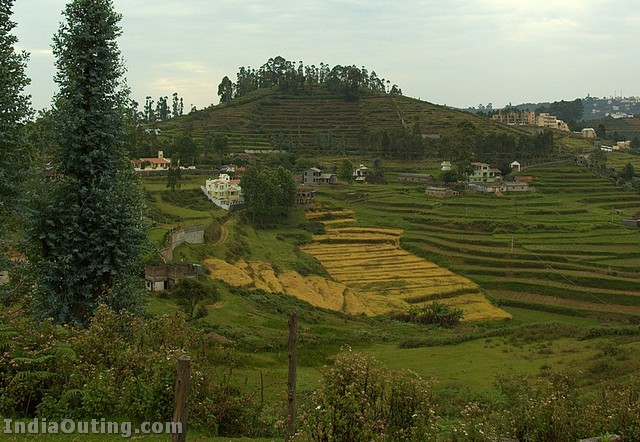
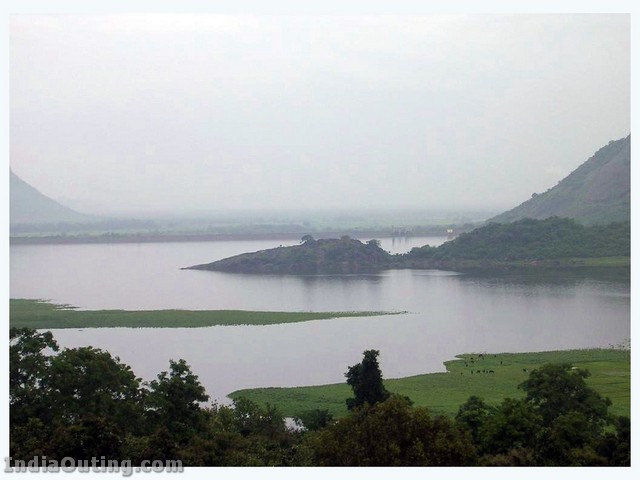

No comments:
Post a Comment